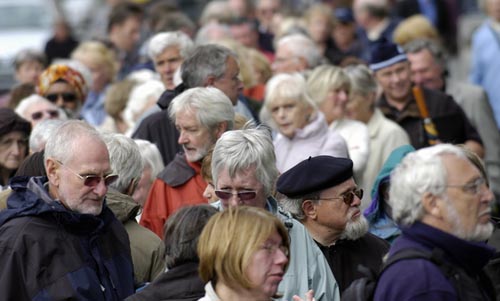NEW stats on Scotland’s population were released yesterday by the National Records of Scotland (NRS) – revealing the changing nature of Scotland’s population.
Tim Ellis, the Registrar General of Scotland, said: ‘This is a time of substantial demographic change: the population is increasing and ageing.
“The ageing population is the most distinctive current demographic development and will bring both opportunities and challenges.
‘In the last half of the 20th century, more people tended to leave Scotland than move here. However, since 2001, this has changed, with more people moving to Scotland than leaving.

“Around 60 per cent of people moving to Scotland are from the rest of the UK, while around 40 per cent are from overseas. Migrants tend to be younger than the population as a whole.’
The report on Scotland’s Population also shows that the estimated population of Scotland on 30 June 2014 was 5,347,600, the highest ever recorded.
Life expectancy in Scotland has also improved greatly over the last 30 years. Life expectancy of those born around 2013 is now 77.1 years for males and 81.1 years for females. This is an increase of 8 and 5.8 years respectively.
However, life expectancy in Scotland has improved more slowly than in the rest of the UK and elsewhere in Europe.
In the year to 30 June 2014, 82,440 people came to Scotland (from the rest of the UK and from overseas) and 64,860 left Scotland (to the rest of the UK and overseas). This resulted in a net-gain of 17,580.
There were 29,069 marriages in Scotland in 2014. Of these, 367 were same-sex marriages following The Marriage and Civil Partnership (Scotland) Act 2014 coming into force on 16th December 2014. There were also 436 civil partnerships – 193 male couples and 243 female couples.
People of Polish ethnicity in Scotland were also proven to be the most economically active, but they were most likely to be in lower-skilled employment.